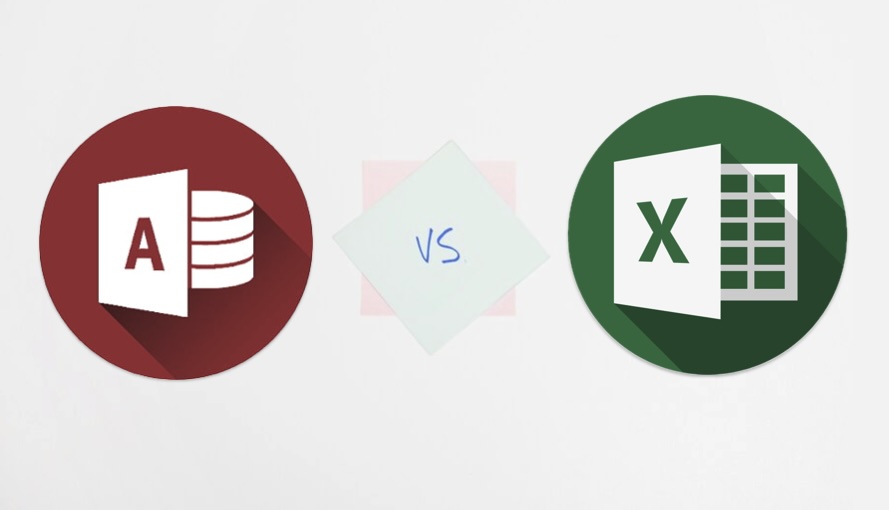Are you looking to streamline your data management processes? Are you tired of struggling with spreadsheets and seeking a more efficient solution? Look no further than the “How to Build an Access Database” eBook. In this comprehensive review, we’ll delve into the ins and outs of this invaluable resource, exploring its content, usability, and potential to revolutionize your database management skills.
What is an Access Database?
An Access database is a powerful tool developed by Microsoft for organizing, managing, and retrieving data. It provides a user-friendly interface for creating and manipulating databases without requiring advanced programming skills.
Why Use Access Databases?
Access databases offer several advantages over traditional spreadsheet-based solutions, including:
Relational Data Management
Access excels in relational data management, allowing users to establish relationships between different sets of data. This relational model facilitates more efficient organization and retrieval of data, enabling users to navigate complex datasets with ease.
- Structured Data Organization: Access enables users to structure data into interconnected tables, each representing a distinct entity or data category.
- Relationship Establishment: Users can define relationships between tables, specifying how data in one table relates to data in another. This allows for seamless data integration and retrieval.
- Referential Integrity: Access enforces referential integrity, ensuring that relationships between data remain consistent and valid. This prevents orphaned records and maintains data coherence.
Data Security
Security is paramount in data management, and Access provides robust features to safeguard your database. Access allows you to implement user-level security, enabling you to control access to sensitive information and restrict unauthorized modifications.
- User Authentication: Access supports user authentication, requiring users to log in with unique credentials before accessing the database. This ensures that only authorized individuals can access the data.
- Permissions Management: Database administrators can define user permissions, specifying the actions (e.g., read, write, delete) each user or user group can perform within the database. This granular control over permissions helps enforce data security policies.
- Encryption: Access offers encryption features to protect data at rest and in transit. By encrypting database files and communication channels, Access enhances data confidentiality and integrity, mitigating the risk of unauthorized access or data tampering.
Customizability
Access offers unparalleled customizability, allowing users to tailor database components to their specific needs. Whether it’s designing custom forms for data input, generating reports for data analysis, or crafting complex queries to extract insights, Access provides a versatile platform for customization.
- Form Design: Access provides intuitive tools for designing custom forms, enabling users to create user-friendly interfaces for data input and manipulation. Users can customize form layout, add interactive controls, and implement data validation rules to enhance usability.
- Report Generation: With Access, users can generate professional-looking reports to analyze and present data effectively. Access offers a variety of report layout options, formatting tools, and grouping features to customize the appearance and structure of reports according to specific requirements.
- Query Construction: Access empowers users to create complex queries to extract insights from their data. Users can leverage query design tools, SQL expressions, and query parameters to customize query results and perform advanced data analysis.
Content Overview

The “How to Build an Access Database” eBook is a comprehensive guide designed to take you from novice to expert in Access database creation and management. Here’s a breakdown of its key features and topics covered:
Introduction to Access
The eBook initiates with an Introduction to Access, offering a comprehensive overview of the software and its myriad benefits. It sets the stage for the subsequent chapters by elucidating Access’s significance in data management and analysis. Here, readers grasp the foundational understanding necessary for navigating through the rest of the content.
Database Design Fundamentals
The core of any successful database lies in its design. This section delves into Database Design Fundamentals, elucidating the principles of sound database architecture. Topics covered include:
- Table Structure: Understanding the anatomy of tables, including fields and data types.
- Relationships: Exploring the various types of relationships (e.g., one-to-many, many-to-many) and their significance in database design.
- Normalization: Delving into normalization techniques to ensure data integrity and efficiency.
Creating Tables and Fields
With a solid understanding of database design principles, readers progress to practical application through Creating Tables and Fields. This section provides step-by-step instructions, guiding users through the process of:
- Creating Tables: From defining table names to specifying field properties, readers learn to construct tables tailored to their specific data requirements.
- Defining Fields: Understanding field properties such as data type, validation rules, and default values ensures precision and consistency in data storage.
Building Queries
Queries serve as powerful tools for extracting, manipulating, and analyzing data. This section focuses on Building Queries, empowering readers to harness Access’s querying capabilities. Key topics include:
- Select Queries: Crafting queries to retrieve specific data subsets based on user-defined criteria.
- Parameter Queries: Implementing dynamic queries that prompt users for input at runtime.
- Calculated Fields: Leveraging expressions to derive new data fields within queries.
Designing Forms
Forms provide an intuitive interface for users to interact with database content. This section delves into Designing Forms, equipping readers with the skills to create user-friendly interfaces. Topics covered include:
- Form Layout: Understanding form design principles to enhance usability and aesthetics.
- Data Entry Controls: Exploring various form controls (e.g., text boxes, combo boxes) to facilitate data input and manipulation.
- Form Navigation: Implementing navigation features to streamline user interaction within forms.
Generating Reports
Reports play a pivotal role in data analysis and presentation. This section focuses on Generating Reports, enabling readers to transform raw data into insightful visualizations. Key topics include:
- Report Design: Exploring report layout options to effectively organize and present data.
- Grouping and Sorting: Utilizing grouping and sorting features to organize data hierarchically within reports.
- Report Formatting: Enhancing report aesthetics through formatting options such as fonts, colors, and styles.
Usability and Accessibility
One of the standout features of the “How to Build an Access Database” eBook is its unwavering commitment to usability and accessibility, ensuring that users of all skill levels can navigate through its content seamlessly. Whether you’re a complete novice taking your first steps into the world of Access databases or an experienced user seeking to refine your skills, the eBook caters to your learning needs with precision and clarity.
Clear and Concise Instructions
At the heart of the eBook’s accessibility is its provision of clear and concise instructions. Each topic is presented in a structured manner, breaking down complex concepts into digestible chunks of information. This approach enables readers to grasp fundamental principles while gradually building upon their knowledge base. Additionally, the use of bullet lists and well-structured paragraphs enhances readability, facilitating efficient learning.
Real-Life Examples
To augment theoretical understanding with practical application, the eBook incorporates real-life examples throughout its content. These examples illustrate how concepts discussed in the text are implemented in real-world scenarios, thereby reinforcing learning and fostering a deeper understanding of Access database principles. By contextualizing abstract concepts within tangible examples, the eBook enhances user engagement and retention.
Intuitive Layout
The eBook’s layout is designed with usability in mind, featuring an intuitive structure that guides users through each topic seamlessly. Key features contributing to its intuitive layout include:
- Helpful Illustrations: Visual aids such as diagrams and charts clarify complex concepts, enhancing comprehension and retention.
- Screenshots: Screenshots of Access interface elements accompany textual explanations, providing visual cues that aid in following along with tutorials.
- Step-by-Step Tutorials: Detailed step-by-step tutorials walk users through key processes, from database creation to report generation, ensuring that no aspect of the learning experience is left to guesswork.
Multi-Format Accessibility
Recognizing the diverse preferences and technological capabilities of its audience, the eBook is made available in multiple formats, including PDF, ePub, and MOBI. This multi-format accessibility ensures compatibility with a wide range of devices and platforms, accommodating users who may prefer to access the content on their desktop computers, tablets, e-readers, or smartphones. Whether you’re at home, in the office, or on the go, the eBook remains accessible at your fingertips, facilitating uninterrupted learning wherever and whenever you choose to engage with it.
Conclusion
The “How to Build an Access Database” eBook is a valuable resource for anyone looking to master Access database creation and management. Its comprehensive content, user-friendly format, and real-world examples make it an indispensable tool for streamlining your data management processes and unlocking the full potential of Access databases. Whether you’re a beginner or an experienced user, this eBook has something to offer everyone on their journey to database mastery. So why wait? Get your copy today and take your data management skills to the next level!
FAQ
A: Yes, absolutely! The eBook is designed to cater to users of all skill levels, from beginners to advanced users. It starts with the basics and gradually progresses to more advanced topics, ensuring that even novice users can follow along.
A: Yes, the eBook is available in multiple formats, including PDF, ePub, and MOBI, making it compatible with a wide range of devices, including smartphones and tablets.
A: Yes, the eBook includes hands-on exercises and practice files to reinforce your learning and help you apply the concepts covered in each chapter.
A: Yes, the eBook comes with a satisfaction guarantee. If you’re not completely satisfied with your purchase, simply contact customer support for a full refund.



